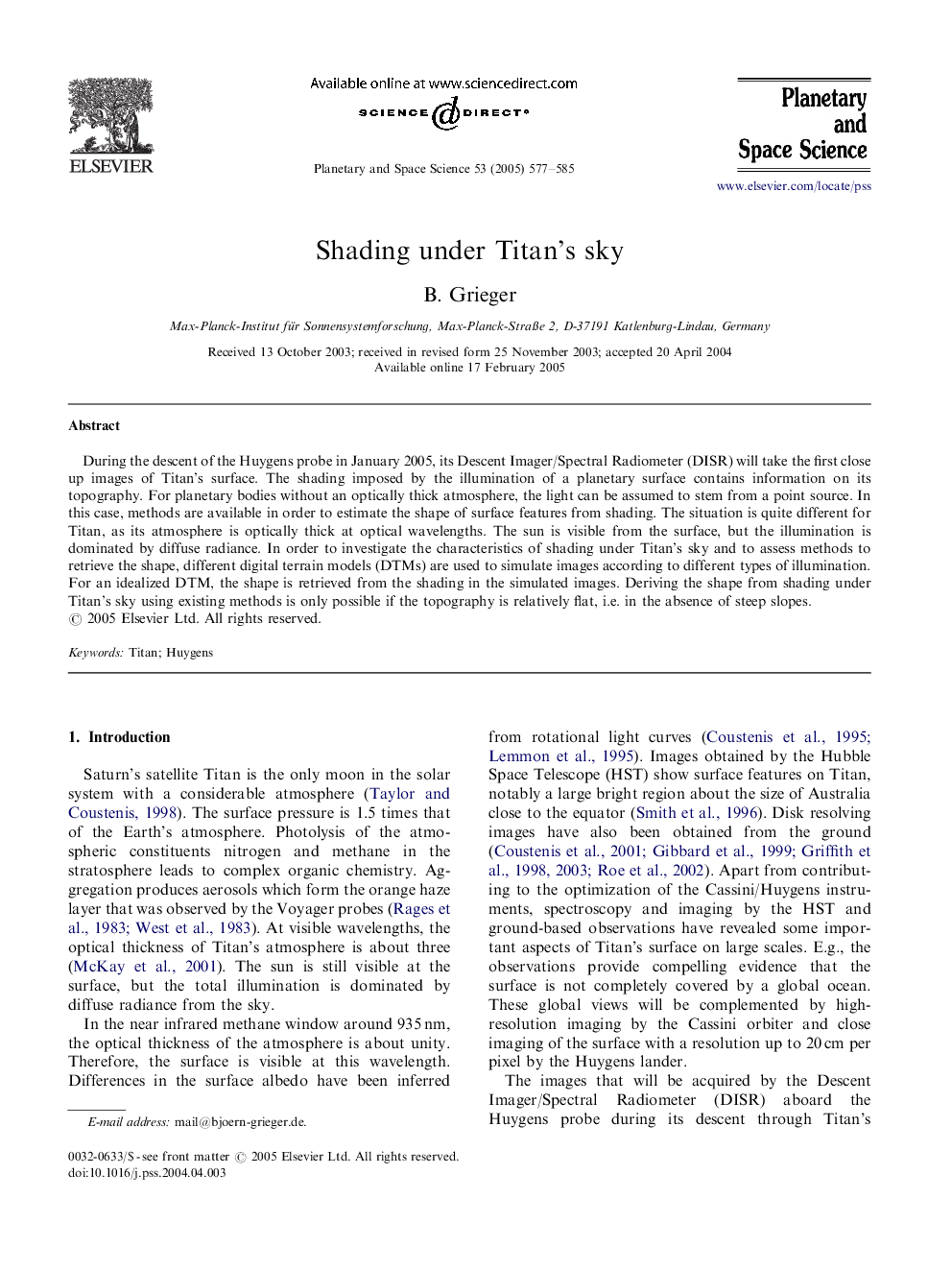| Article ID | Journal | Published Year | Pages | File Type |
|---|---|---|---|---|
| 10705370 | Planetary and Space Science | 2005 | 9 Pages |
Abstract
During the descent of the Huygens probe in January 2005, its Descent Imager/Spectral Radiometer (DISR) will take the first close up images of Titan's surface. The shading imposed by the illumination of a planetary surface contains information on its topography. For planetary bodies without an optically thick atmosphere, the light can be assumed to stem from a point source. In this case, methods are available in order to estimate the shape of surface features from shading. The situation is quite different for Titan, as its atmosphere is optically thick at optical wavelengths. The sun is visible from the surface, but the illumination is dominated by diffuse radiance. In order to investigate the characteristics of shading under Titan's sky and to assess methods to retrieve the shape, different digital terrain models (DTMs) are used to simulate images according to different types of illumination. For an idealized DTM, the shape is retrieved from the shading in the simulated images. Deriving the shape from shading under Titan's sky using existing methods is only possible if the topography is relatively flat, i.e. in the absence of steep slopes.
Related Topics
Physical Sciences and Engineering
Earth and Planetary Sciences
Geophysics
Authors
B. Grieger,
